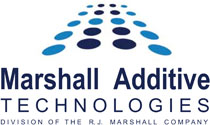Antimony trioxide is rated as R40 in the EU (limited evidence of a carcinogenic effect). The US EPA has not given it a carcinogenicity classification. It seems to have little ecotoxicological problem but in some jurisdictions it qualifies as a “heavy metal.” As a synergist for halogenated flame retardants, it is difficult to find alternatives, although it can be partially replaced by zinc borates, zinc sulfide, or tin compounds. Various solid formulations containing antimony trioxide combined with other inorganic additives or mineral carriers are commercially available. For example, the CT FRZ series from Marshall Additive Technologies are found to have cost and effectiveness advantages in some halogen flame retardant formulations. Current information on toxicology and risk of antimony trioxide can be obtained from an international trade association (IAOIA). A recent overview by the International Antimony Association concludes that there is a regulatory consensus that antimony compounds are safe to use, nevertheless, a search for alternatives continues. Part of the motivation is the cost variability.
Superior Flame Retardant & Smoke Suppressant Performance
(800) 338-7900
